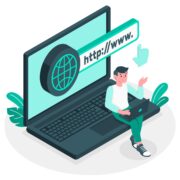Mobile Application Development for Businesses – A Complete Guide
An app has become a necessity in today’s Internet-focused world. Users trust applications for their convenience, speed, and reliability, and they expect businesses to offer seamless experiences through well-designed apps. They use apps to connect, shop, and manage their lives, seeking functionality that’s both efficient and engaging.
Creating an app, however, involves multiple stages that can confuse beginners. Here, we’ll describe the 8 phases of mobile application development services from Purrweb’s perspective.
Discovery phase
The discovery phase checks your hypothesis before the actual development of your app begins. Often, the ideas that seem promising or innovative don’t always resonate with the target audience. This phase is crucial in validating whether your idea holds potential in the real market.
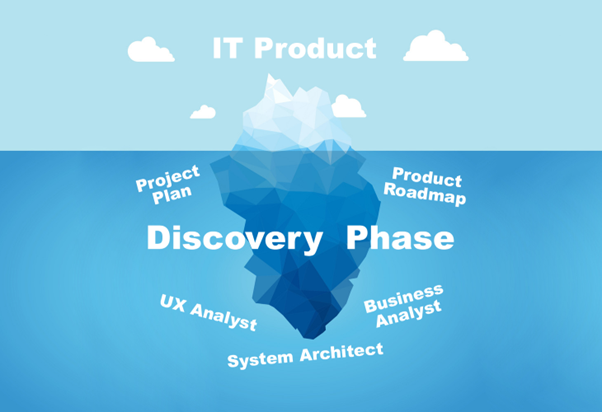
Here’s what it generally entails:
- Market research. Determining whether there’s an audience for your app. Research similar products and assess competition.
- User interviews. Mobile app development service providers talk to potential users to understand their needs, preferences, and any pain points.
- Feasibility analysis. Considering technical aspects, resources, and potential constraints that might impact development.
- MVP planning. Defining the minimum viable product. This version should include core features to gauge user interest without overextending the budget.
While the discovery phase isn’t part of active development, it can save substantial time and resources early on. Investors view positive results from this phase as a solid foundation, which not only strengthens your pitch but also helps in outlining app features and design with a data-backed approach.
Team brainstorming
In this phase, your team gathers to brainstorm app functionalities. You’ll also discuss budget constraints and allocate resources. The more involved you are in the process, the easier it becomes to collaborate with the mobile app development service partner.
Key steps include:
- Feature brainstorming. Decide on the main functions and unique features. Consider what sets your app apart from the competition.
- Budgeting. Determine how much you can realistically invest. Budget planning at this stage prevents overspending later.
- Goal setting. Establish clear objectives for the project, both in terms of the development timeline and expected outcomes.
Your involvement at this stage allows for better alignment with your app development service provider and ensures everyone is on the same page before the work begins.
Agreement with the development partner
After defining your app’s features and budget, the next step is formalizing agreements with your chosen development partner.
Here’s what this entails:
- Contract signing. Sign essential documents, including non-disclosure agreements (NDAs) if required.
- Initial meetings. Conduct meetings to clarify your objectives, priorities, and expectations.
- Briefing document. You’ll be asked to fill out a brief, which includes project scope, target audience, and specific requirements.
- Reference materials. Share any reference materials, mood boards, or design inspirations with your application development service provider. This helps communicate your vision clearly to the design and development teams.
Formalizing these details lays a transparent foundation, ensuring that both parties are aligned in terms of goals, processes, and expectations.
Design phase
The design phase begins with wireframes, which are low-fidelity layouts that outline basic app structure without detailed visuals.
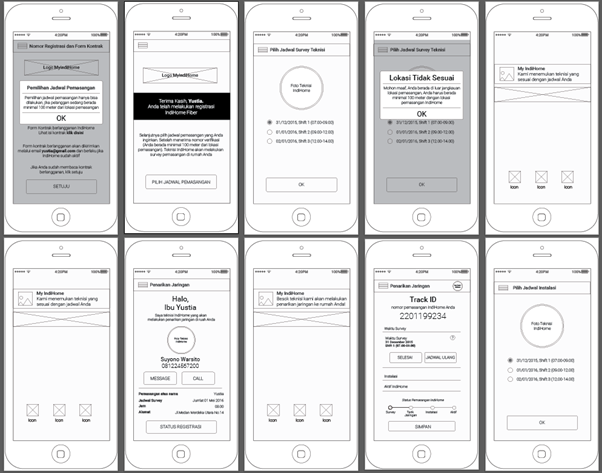
This is followed by more refined designs of several screens. These are shared with your team and investors for feedback.
App design concept example from Purrweb
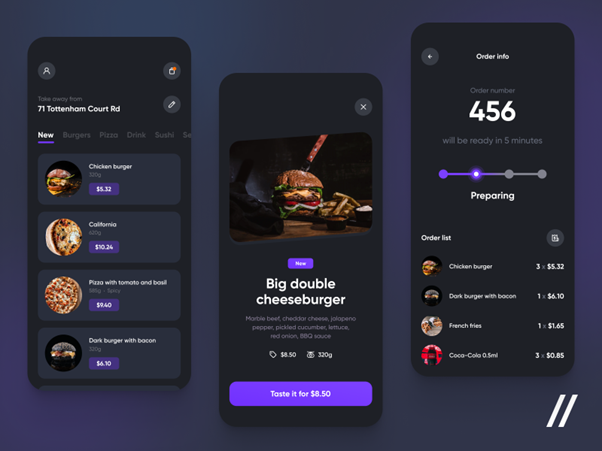
After that, complete designs of all screens are created. A UI kit is also developed to ensure consistency in colors, fonts, and icons for the developers to use.
An example of a UI kit
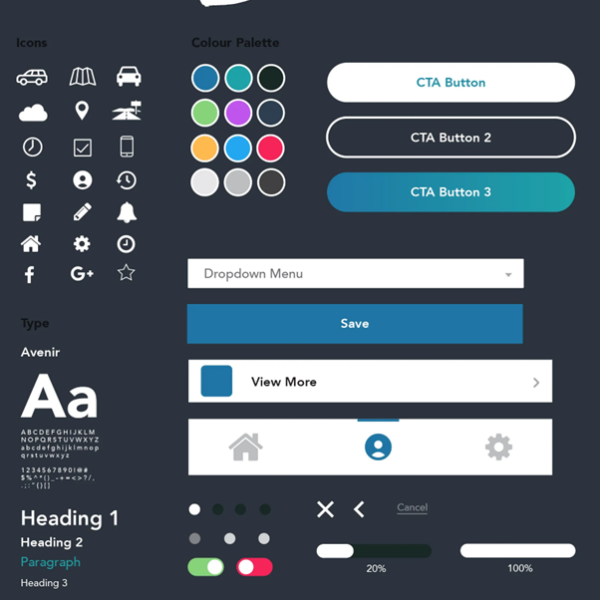
Development phase
The development phase is where your app takes form. Both front-end and back-end developers create the app’s functionality and infrastructure:
| Feature | Front-end role | Back-end role |
| User Interface | Implements design, animations, and responsiveness | Handles data processing and storage |
| User Requests | Handles input validation and interaction feedback | Manages data retrieval and secure data exchange |
| App Security | Ensures a secure front-end experience | Enforces authentication, data encryption, and APIs |
Testing phase
Testing overlaps with development to ensure every feature works as intended. Regular testing identifies issues early, preventing larger problems post-launch. The frequency and approach can depend on the methodology used, such as Agile, which supports frequent testing cycles every 1-2 weeks.
Here are some types of testing that are used by mobile app development service providers:
- Unit testing. Examines individual components for errors.
- Integration testing. Verifies the interaction between front-end and back-end components.
- User acceptance testing. Involves actual users to ensure the app meets their needs and works across devices.
Testing continues even after the app is built, ensuring a stable and bug-free experience for users.
Release phase
When the app is ready for launch, it must meet the requirements set by app stores. During the release phase your contactor makes:
- Compliance check. Ensure the app aligns with platform policies (App Store or Google Play requirements).
- Final testing. Conduct a last round of tests to confirm stability and compatibility.
- Deployment. Submit the app for review and approval. The process can vary based on each platform’s guidelines.
Maintenance
Once live, your app will need ongoing support. Timely updates, bug fixes, and feature expansions are essential for maintaining user satisfaction.
Regular maintenance includes:
- Updates. Release updates to stay compatible with new OS versions and device models.
- Bug fixes. Address any post-launch bugs that users report.
- Feature enhancements. Expand functionality as user needs evolve or to stay competitive.
What should I start from?
Start by contacting professional app development services like Purrweb. They can guide you through every step. First, they’ll help assess your idea’s feasibility. Then, they’ll handle project planning, including budgeting and feature selection. They’ll also assist with design, development, and testing phases. Finally, Purrweb ensures a smooth launch and provides ongoing support. Partnering with experts gives your app a strong foundation for success.


